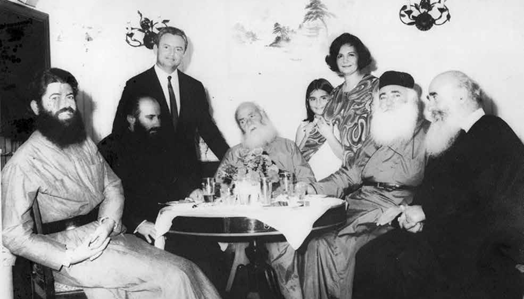Saint Benedict: Monasticism and Mission
Biography
Saint Benedict came from the Italian city of Nurcia and was the child of wealthy and pious parents. According to the Synaxarist of St. Nicodemus, he lived in the 6th century AD. From an early age he accepted his vocation and, together with the man who took charge of his upbringing, went to the desert, where he exercised and was reconciled to God. He transformed a canyon in the Apennine Mountains into a place of prayer, fasting, vigil and study of the Divine Word, a place of sanctification. The area where the saint practiced became a pole of attraction. The performance of miraculous signs combined with the sanctity of his life resulted first of all in the arrival of hundreds of monks as his subjects and then in the foundation of a monastery on Mount Cassino in 540 AD. The monks of his monastery were called Benedictines and this particular monastic order exists to this day in the West. In 543 AD after completing his blessed life on earth, Saint Benedict died in the Lord, leaving behind a great work that contributed to the missionary effort of the Church.

Monasticism and Mission
Monasticism according to St Chrysostom is the true philosophy. “The monks speak of the apostolic zeal and the unselfish powers (the angels)”.
- What does the zeal of the apostles consist of? The attempt to apply Jesus’ exhortation to “walk”.
- And what is the work of the angels? The ministry of the plan of the Divine Economy, that is, the plan that Christ devised and completed in order to give us the possibility of returning to Paradise, if of course we seek it.
Therefore, a monk is the man who has in his heart the flame of the apostle and being close to God – distant from earthly things -, like an angel, he hastens to contribute decisively to the spread of the Gospel “throughout the world”. Many people ask: what does monasticism have to do with mission? The monk leaves the world, withdraws and disappears from it, whereas the work of the mission – and especially the mission to the nations – is a plunge into the world, with all that this implies. And yet the basis, purpose and goal of monasticism and mission are common. It sounds contradictory and yet it is! They are based on the two most important commandments of the Lord: “Thou shalt love the Lord thy God with all thy heart, and with all thy soul, and with all thy mind. This is the first and great commandment. And the second like it. “Thou shalt love thy neighbour as thyself. Monasticism, as St. Porphyry points out, is not a negative flight from the world, but a flight of divine love, of divine adoration. It is a manifestation of absolute love for God and for the image of God, man. It is not an individual, selfish and egocentric action, but an act of sacrifice for the sake of the world, as is the mission. The prayers of the monks, the sweat of their penances and the tears of their prayer support the missionaries, soften the souls of the newly enlightened and the catechized. Then, the purpose of both monasticism and missionary work is that the Gospel, the Good News, may prevail throughout the world from end to end, throughout the whole earth. And their goal? The salvation of the world, the whole world, regardless of ethnicity, color, gender, and age! After all, Heaven is big and God the Father’s love is even bigger and it fits us all! Finally, monasticism is the highest effort to reach holiness and we know very well that a saint is the greatest and greatest missionary. Monasticism is the wings of the mission, as it embodies the foundation of the Orthodox Church in the past, present and future.




